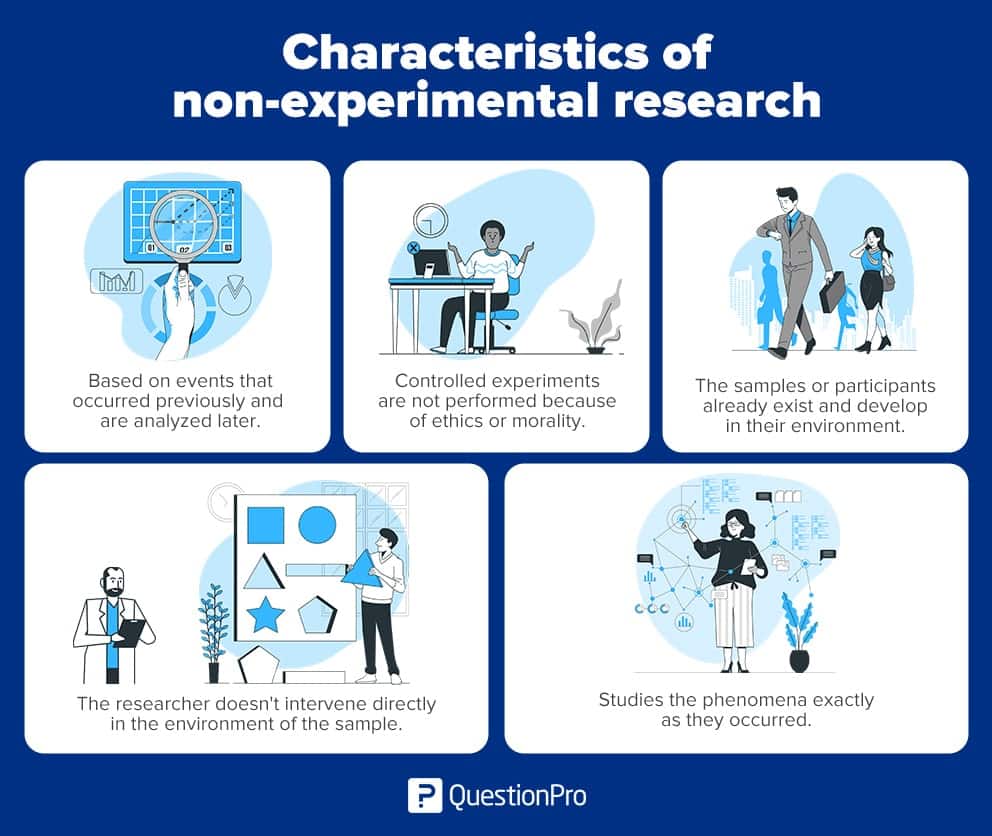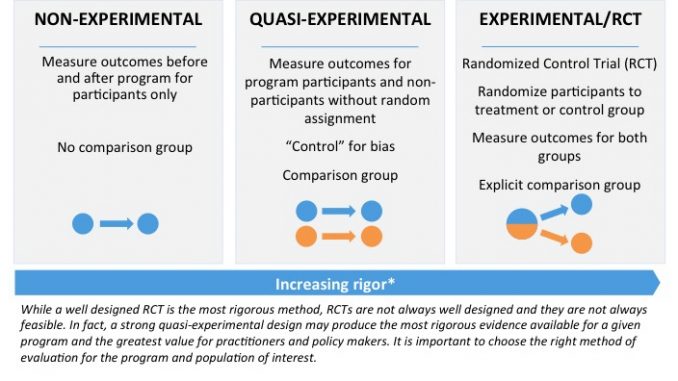Correlational research and observational research. Correlational research is a non-experimental research technique that helps researchers establish a relationship between two closely connected variables.

Understanding Research Winginstitute Org
There are several types of non-experimental research designs including correlational descriptive and historical.

. Non-experimental research on the other hand can be just as interesting but you cannot draw the same conclusions from it as you can with experimental research. Correlational and quasi-experimental research focus on a statistical relationship but lack manipulation or random assignment. Before-and-after without control design.
Types of non-experimental research. Learn the differences between non-experimental and experimental research and explore the advantages and disadvantages of each type of scientific endeavor. 2correlational designex post facto design 3developmental research design 4epidemiological designs 5survey research design.
First cross-sectional researchinvolves comparing two or more pre-existing groups of people. Single-variable research focuses on a single variable rather than a relationship between variables. TYPES OF NONEXPERIMENTAL RESEARCH DESIGN Descriptive Design Univariant descriptive design Exploratory descriptive design Comparative descriptive design Correlational design Prospective design Retrospective design Developmental Research Design Cross-sectional design Longitudinal design Survey Research Design.
Longitudinal studies are also non-experimental research and the purpose of these studies is to study a situation people or phenomenon over a period of time to observe the change. Cross-sectional research is used to observe and analyze the exact time of the research to cover various study groups or samples. Experimental research designs are based on a clear hypothesis the purpose of the research.
Cross-sectional research correlational research and observational research. Here we explain three of the most common types. There are important factors at play when creating a research methodology.
Non-experimental research falls into two broad categories. Nonequivalent groups design regression discontinuity and natural experiments. What is Non-Experimental Research.
Survey case studies correlational studies comparative studies and descriptive studies are some of the examples of non-experimental research design. Partially Randomized Preference Trial Design. Non-experimental research designs are carried out in natural settings it does not.
An exploratory study is a small-scale study of a relatively short duration which is. Data in this design is either collected from people as a whole or from a statistically significant sample of people at a particular interval. Cross-sectional research involves the comparison of two or more pre-existing groups of people.
Yin 2014 has a succinct way of differentiating the two. Correlational and quasi-experimental research focus on a statistical relationship but lack manipulation or random assignment. Describe the different types of nonequivalent groups quasi-experimental designs.
Designs category research design non experimental research design 1descriptive design. These include ethics the validity of data and reliability. Correlational type of research compares the statistical relationship between two variables.
The design of a research topic explains the type of research experimental. Nonequivalent groups design In nonequivalent group design the researcher chooses existing groups that appear similar but where only one of the groups experiences the treatment. Non-experimental research falls into three broad categories.
Experimental and non-experimental research design Experimental research design. This type of research is divided into. There are three broad types of nonexperimental research.
Non-experimental research can take the following forms. Differences between Experimental and Non-Experimental Research. In other words the design is the plan the method is how to realize that plan.
Design is logical while method is logistical. The most common type of non-experimental research conducted in psychology is correlational research. In experimental research the researcher can control and manipulate the environment of the research including the predictor variable which can be changed.
Recall that when participants in a between-subjects experiment are randomly assigned to conditions the resulting groups are likely to be quite similar. There are three broad types of nonexperimental research. Research in social science medical science and biology often uses cross-sectional studies.
Non-Experimental and Experimental Research. What makes this approach non-experimental is that there is no manipulation of an independ. Types of Non-Experimental Research.
It is a theory-based design method which is created by gathering analyzing and presenting collected data. Correlational research is considered non-experimental because it focuses on the statistical relationship between two variables but. There is no assumption while.
Identify some of the threats to internal validity associated with each of these designs. Research Study Design Non-Experimental Study. This type of research requires two different groups.
Non-experimental research is usually descriptive or correlational which means that you are either describing a situation or phenomenon simply as it stands or you are describing a relationship between two or more. Single-variable research focuses on a single variable rather than a relationship between variables. 01092022 Create an account.
On the other hand non-experimental research cannot be controlled or manipulated by the researcher at will. A non-experimental study is one in which the researcher just describes and analyzes researchable.

Non Experimental Research What It Is Types Tips Questionpro

Non Experimental Research What It Is Types Tips Questionpro

20 Differences Between Randomized Controlled Trial Rct And Quasi Experimental Study Design Public Health Notes

0 Comments